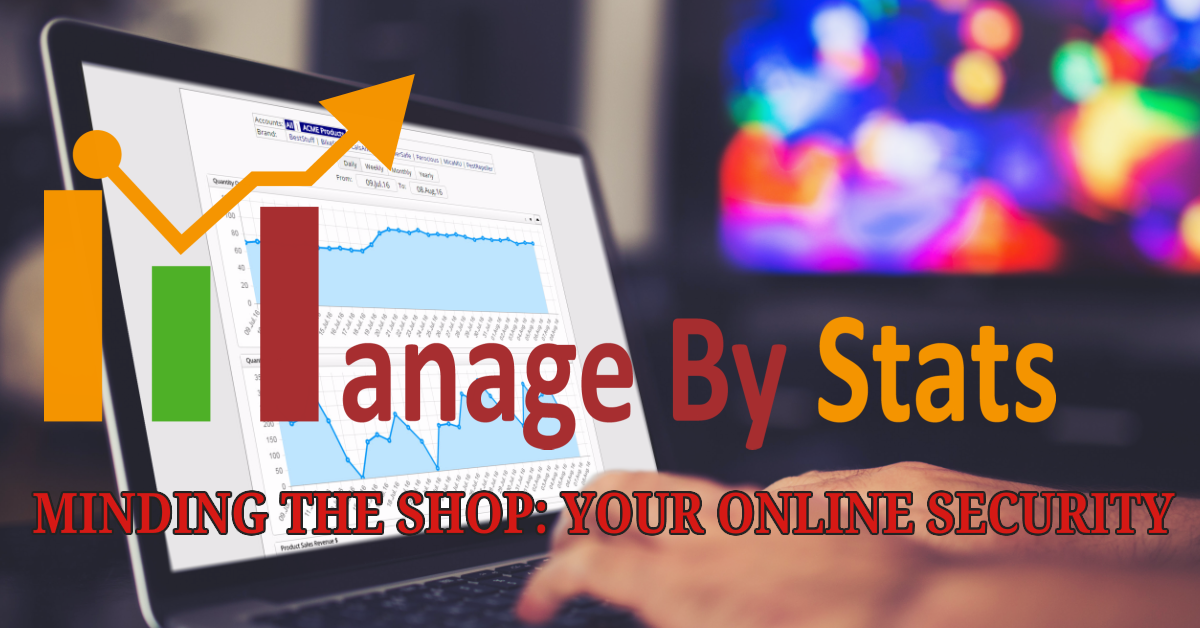Amazon security is a hot topic currently.
Security and the need for keeping security tight is such a part of existence it can sometimes slip our attention. It takes energy and focus to be “on” at all times, to catch those little things that might otherwise get past us and, potentially, create a nightmare. There’s an old saying from the military that applies: “Eternal Vigilance Is The Price Of Freedom”. While that’s a true statement, and our military certainly epitomizes that philosophy … who wants to sleep with one eye open?
To get around this we set up systems, use passwords, pay alarm companies and so on, all designed to offload this vigilance. But seeing to our own security is, ultimately, up to us. As threats evolve we need to evolve with them, and that means staying up to date with existing measures and beefing them up where needed. Fortunately, Amazon, Google, Microsoft and other large service providers help with this and make it as easy and painless as possible.
In truth there’s more positive in the world than negative. More good. Despite the merchants of chaos running the typical news hour, despite all the bad things getting all media attention with alarming coverage, the evidence supports the fact that, mostly, we’re good.
That said, we do need to make sure we protect ourselves against the criminal minority. It isn’t hard, but if we don’t stay up to date we can end up falling victim to new methods of attack. Usually all it takes is a little extra prevention.
This is true in particular with online security. That area of crime tends to evolve the fastest. A current target of choice, for example, is Amazon. There are stories of Amazon and Google accounts being hacked, resulting in Amazon earnings being sent to thieves’ bank accounts overseas. Overseas hackers are focusing more and more on ways to extract money by deception, theft and extortion. It isn’t that the criminals are suddenly more powerful. They aren’t. It’s just that they keep picking and picking and picking until they find a way in. With a few preventative steps you can stay ahead of the bad guys and shut them out.
Again, it isn’t hard, but you have to take advantage of the security options that are there.
To that end we’ve prepared a few things that will help. Here are some often overlooked steps you should consider and check on to make sure your Amazon and other online accounts are safe.
- Make sure you are using strong passwords for your Amazon and Google accounts. And if you are not using Gmail for your email, make sure you have strong passwords on your other email accounts.
- Enable Two-Step Authentication for your Amazon You can do that in Settings / Login Settings / Advanced Security Settings.
- Enable Two-Step Authentication for your Google accounts – including GMail. The reason this is really important is this: If thieves have access to your email they can often use that to get into your Amazon account – even if you have Amazon Two-Step Authentication. To handle this, in Google, go to the top right, My Account / Sign-in & Security / Signing in to Google.
- Now go back to Amazon and check/verify all the settings in your Amazon Seller Central account. Go to Settings / Account info and check the Deposit Methods, Payment Methods etc – make sure it is all as it should be.
- Check your Amazon Seller Central account user invites in Settings / User permissions. Look in the sections for Invited Users, Pending Users and Current Users, and make sure the only users there are people you have authorized. It is also a good idea to check on the permissions for each user by clicking the edit link on the right, and making sure that no one (other than yourself) has permissions in the Settings section for Seller Bank Account or User Permissions. You should be the only user able to make changes to bank accounts and user permissions.
- In your email accounts – check to see that there are no rules or filters that forward your emails to anyone you haven’t authorized. In Gmail, check under Settings and then in the Filters and Forwarding
- For those of you using email clients like Outlook, if you do use Gmail as an email provider and add Google Two-step authentication, you’ll need to setup an “app” specific password in Google for your email client, since the email client can’t do the two-step verification procedure. See this link for instructions for Outlook users, but the principle is the same for any email client or app: Outlook 2-Step Verification
- You should of course have a good anti-virus system in place on your computers. These protect against viruses and especially trojans (malicious software that records what you type and send your logins and passwords to thieves).
- And you should have good ransomware protection installed on your computer. Ransomware is software that encrypts your entire computer and holds your computer data ransom until you have paid a (sometimes extremely large) ransom amount to get it unlocked. Here is an article with good additional precautions on this. We use the VeeDog ransomware blocker on all our systems.
Online security is important. We spend large parts of our lives online, and conduct a lot of our business there. Staying ahead of the bad guys doesn’t have to be hard, but it does require a bit of vigilance. Taking the above steps, seeing to your online security – these simple actions will help keep you far beyond their reach.
Thanks for reading. Have fun, win big, and stay safe.
All our best,
The ManageByStats Team





